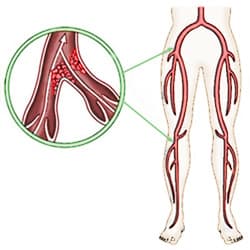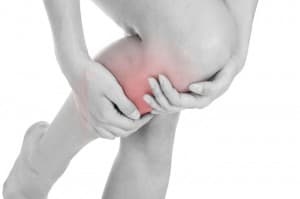What is Deep Vein Thrombosis and How Do You Prevent it After Surgery?
March was Deep Vein Thrombosis Awareness Month, and because developing deep vein thrombosis is a risk associated with orthopedic surgery, we’re diving into quick facts and prevention tips for the condition that affects upwards of 600,000 Americans each year.
What is Deep Vein Thrombosis?
Deep Vein Thrombosis, or DVT, happens when a blood clot forms deep within a vein. While DVT occurs most commonly in the leg (thigh or calf), it can actually occur anywhere in the body.
While deep vein thrombosis can be overcome, it does have the potential to develop into a much more serious health risk. Venous hypertension may occur if the valves in the blood vessels become damaged. While this may not be life threatening, it does result in decreased mobility and chronic swelling. A more serious consequence is pulmonary embolism, which happens when the clot breaks free and reaches the lungs. This condition can be potentially fatal.
What Causes Deep Vein Thrombosis?
Many factors can contribute to deep vein thrombosis, such as immobility, medical conditions, hereditary risk, age, obesity and more.
Deep Vein Thrombosis is especially something to watch for and take prevention methods for after surgery or trauma because of bed rest or immobility.
Because Rebound performs a variety of lower extremity surgeries and treats fractures, we make sure to create a personalized treatment and rehabilitation plan for each patient, which includes taking care to prevent major risks like DVT.
DVT can happen after many types of surgeries, but particularly after orthopedic surgery on the hip or knee. Immobilization plays a role, because patients often find it difficult to resume activity after surgery.
Inactivity following a surgery causes your blood flow to slow down, which may cause a blood clot. When the clot develops deep within a vein, DVT occurs.

What Symptoms are Associated with Deep Vein Thrombosis?
Some patients do not experience symptoms, while others may experience pain a swelling as a result of the lack of blood flow.
Other symptoms include:
- Discomfort in the calf or thigh
- Tenderness above or below the knee
- Edema
- Distended veins
- Foot pain and difficulty walking

How Can I Prevent Deep Vein Thrombosis After Surgery?
Because DVT does not always involve symptoms or signs, and is difficult to detect, Rebound physicians advise a combination of physical activity and medication to avoid clotting and prevent DVT.
Mobility and following your rehabilitation and recovery plan is crucial. After surgery, simple low-impact exercises can help you increase blood flow and reclaim dexterity.
Although the thought of resuming physical activity may not be appealing, a lack of activity can put you at higher risk for developing DVT. Post-surgery exercises may include:
- Graduated walking program
- Seated leg lifts
- Ankle turns
- Stretching
Anticoagulant medication typically begins prior to surgery. Patients are also typically advised to continue the treatment after they leave the hospital and begin home recovery.
If you are have questions about preventing DVT after your orthopedic surgery, be sure to contact us at 1-800-REBOUND.
American Academy of Orthopaedic Surgeons (AAOS) – Preventing Blood Clots After Orthopaedic Surgery
